A central element of the Khanty culture is the bear ceremony, which is held after a bear hunt. It serves to reconcile people with bears, with whom they feel a special connection due to their perceived closeness, which is communicated through special rituals. The bear ceremony reflects the entire worldview of the Khanty people, who see their environment as a shared space with many other beings – animals, spirits, and ancestors – with whom they therefore maintain comprehensive and lasting social relationships.
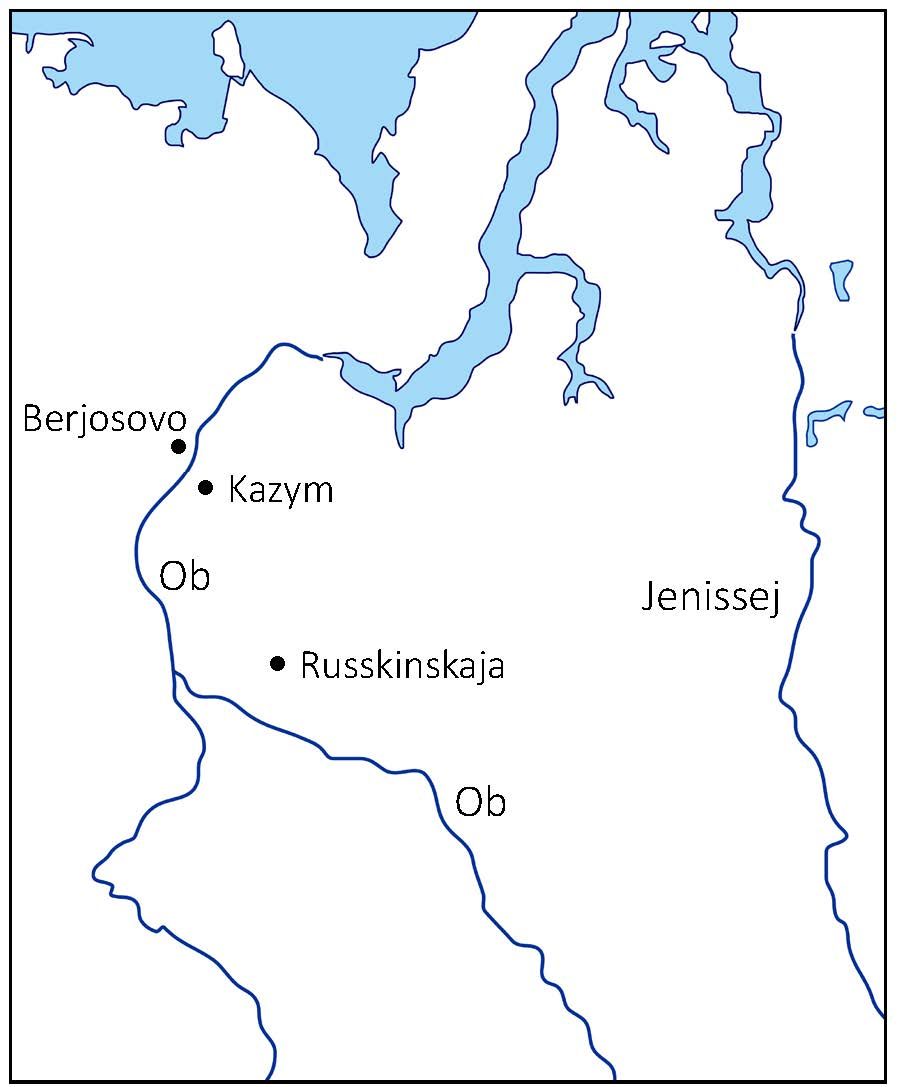
Khanty
[Self-designation ханти, хантэ, хантах, кантэк, кантэх, кантага-ех, канта-ях, кант] The Khanty (formerly also known as Ostyaks) are linguistically most closely related to Hungarian. They live in Western Siberia in an area of intensive oil and gas production. Some of them continue to practice reindeer herding, and many also make a living from fishing, hunting, and gathering plants and berries. In the worldview and rituals of the Khanty people, the bear plays a special role as a mediator for a sustainable relationship with nature. Sacred songs play an important role in the bear ceremony, during which masks made of birch bark are often worn.
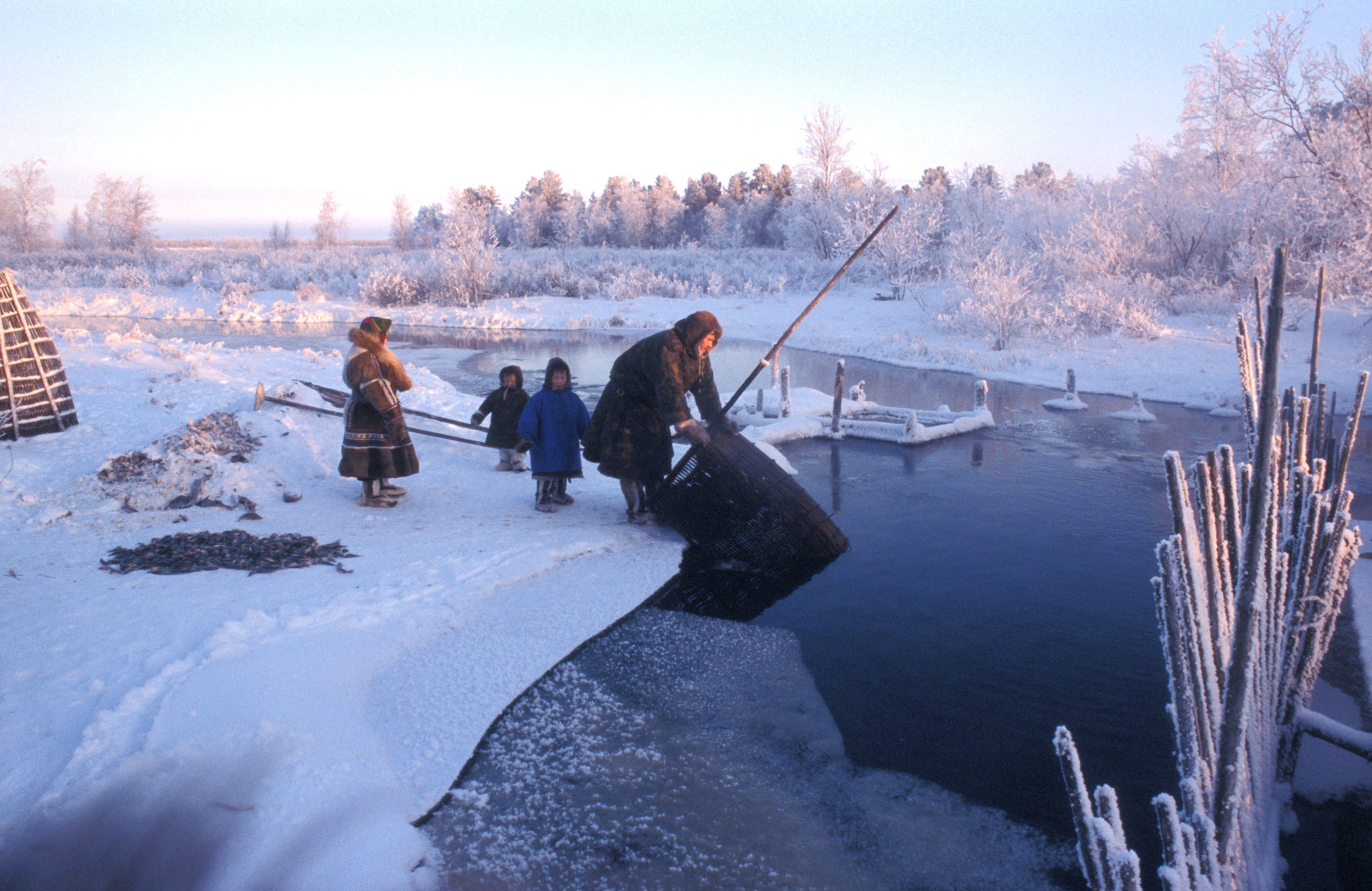
Worldview & Rituals
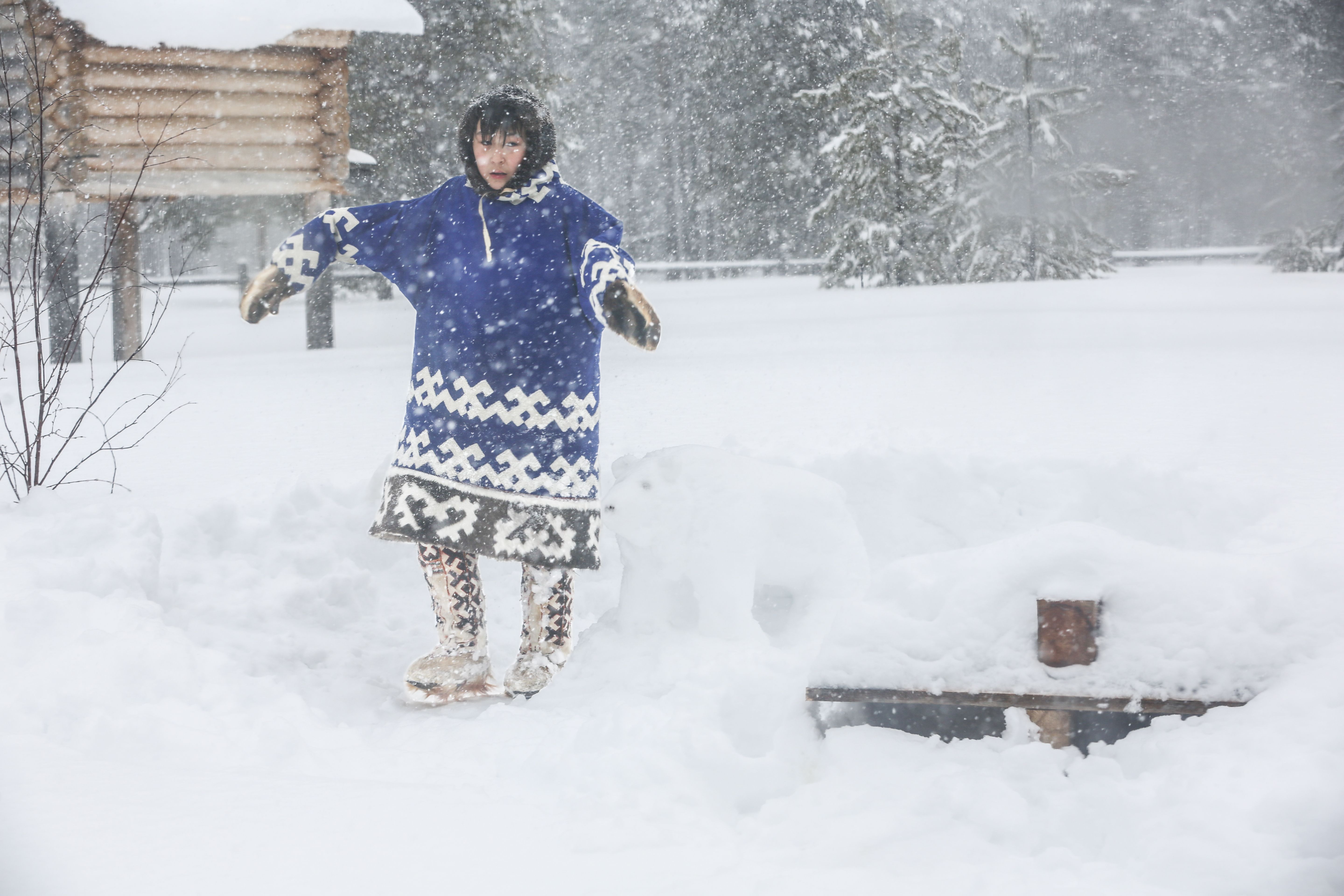
Gathering plants
Gathering berries and plants is an important activity, especially for women and children during the summer, to provide themselves with essential vitamins for the long winter. Special baskets are used for this purpose, which are traditionally made from birch bark. Experiences from these often communal gathering trips are frequently reflected in storytelling and singing traditions. One such story tells of a surprising encounter with a bear, for whom berries are also a favorite food.
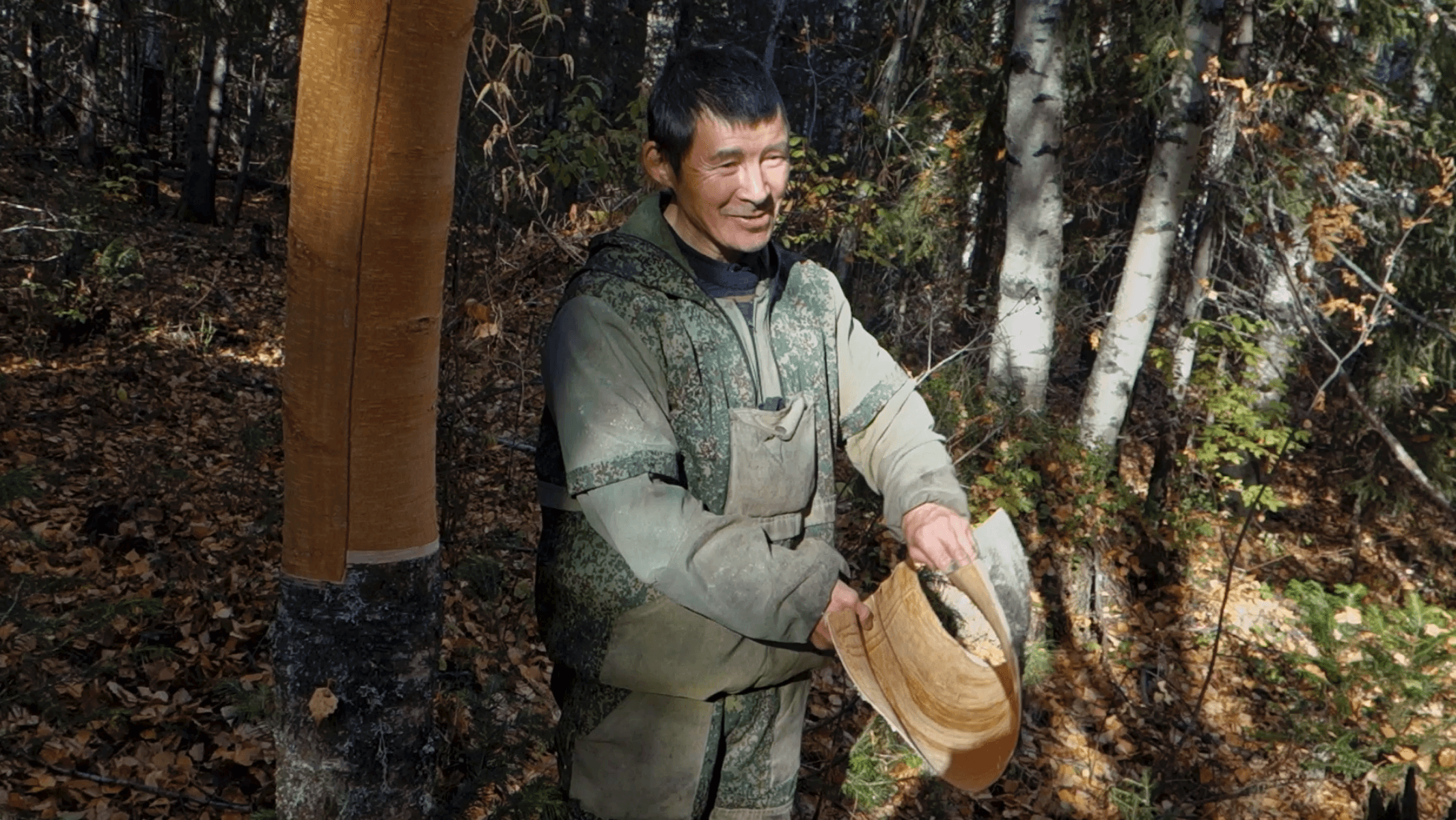
Fishing
In addition to reindeer herding and hunting, fishing is particularly important for the Khanty and Mansi. Fishing takes place in rivers, mainly using traditional and proven techniques involving fish traps and weirs. For this, larch wood is split into slats and woven into fish traps using the roots of twisted pine trees.This is a sustainable fishing method that secures the food supply for many families. The skin of certain fish is also used to make leather for various types of bags.

Household items
Many things that the Khanty use in everyday life are made from materials found in their environment. Wood and birch bark are most commonly used, as well as fish leather. In addition to their practical uses, these objects often have special meanings, which are expressed in corresponding ornaments. These lovingly and beautifully designed decorations show how closely the people feel connected to nature and the other beings that live there.
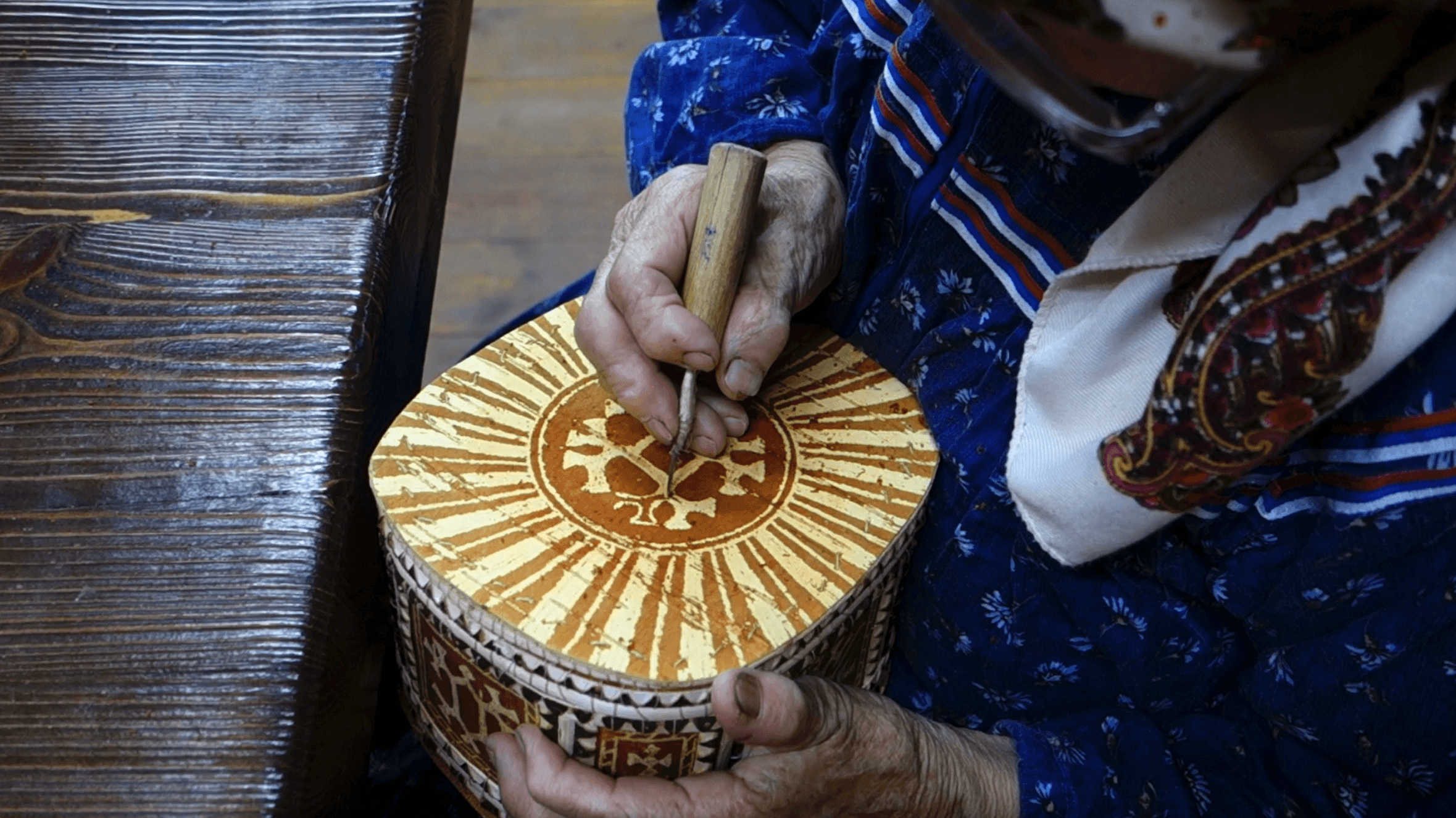
Group by
Gathering plants

Basket
Fishing
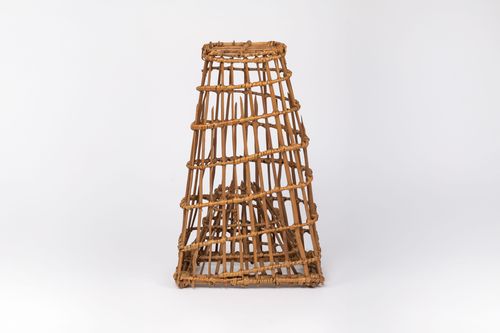
Fischreuse
Household items

Cradle for the night
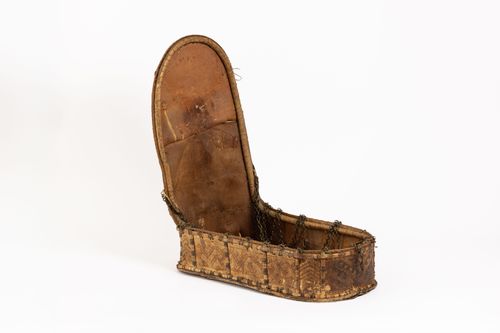
Cradle for the day

Birch bark tray




